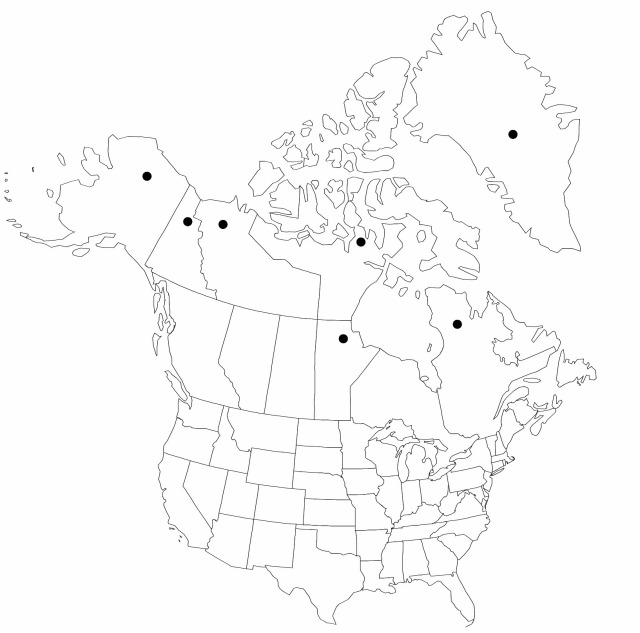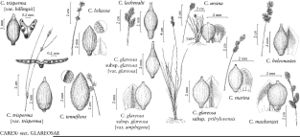Carex ursina
Amer. J. Sci. Arts 27: 240, plate V, fig. 68. 1835.
Plants densely cespitose; rhizomes short. Culms often slightly curved, weak, 2–10 cm. Leaves: sheaths pale to mid brown abaxially, loose, inner band white-hyaline, concave at summit; ligules shorter than wide; blades usually pale to gray-green, flat at base, involute distally, 1–5 cm × 0.5–1.5 mm, exceeding culms. Inflorescences 0.4–1 cm × 3–6 mm; bracts inconspicuous, shorter than spikes. Spike 1(–2), gynecandrous, closely approximate, containing 7–15 perigynia, obovoid or suborbicular, 4–7 × 4 mm. Pistillate scales chestnut-brown with lighter center and very narrow hyaline margins, broadly ovate, subequal to perigynia, apex obtuse. Perigynia closely appressed, gray-brown to pale or mid brown, lightly or obscurely several-veined, ovate, 1.5–2 × 1.25 mm, widest near middle, subcoriaceous; beak short, entire. Achenes red-brown, obovate, 1.2 × 0.7–1 mm, dull to slightly glossy. 2n = 64.
Phenology: Fruiting Jul–Aug.
Habitat: Sandy, gravelly seashores in Arctic
Elevation: 0–10 m
Distribution

Greenland, Man., N.W.T., Nunavut, Que., Yukon, Alaska, Eurasia.
Discussion
Selected References
None.
